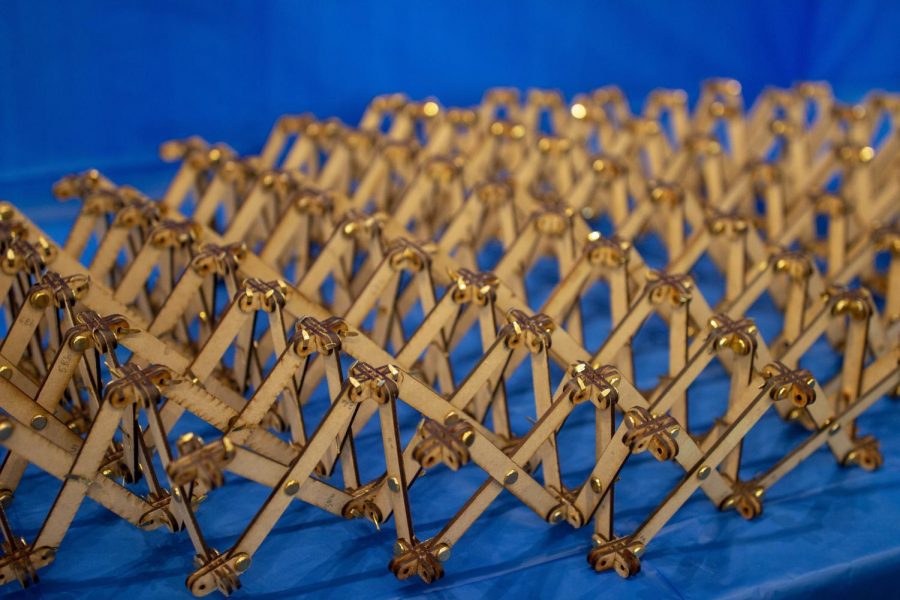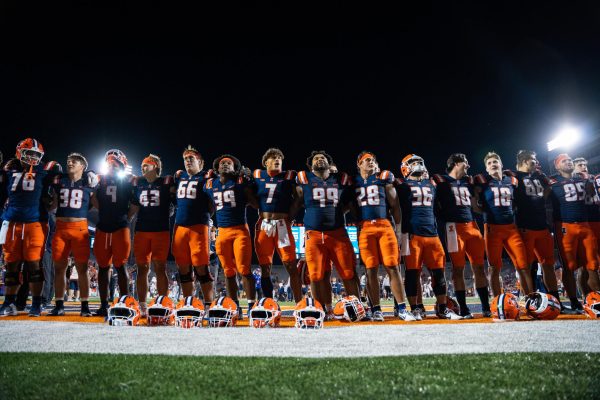Exhibition of student work on transformable structures
Student model from the class ARCH 536: Planning and Design of Structural Systems, taken at the Temple Buell Art Gallery, in the Architecture building on Monday.
Oct 24, 2018
An exhibition of models based on transformable structures is on display at the Temple Buell Art Gallery in the Architecture Building from Monday to Wednesday.
The exhibition, “How Structures Move: Projects in Transformable Design,” is made up of adaptable designs created by students in the Architecture 536 class, intended to provide ultimate ease in transportation and adaptation in different environments.
“The goal was to teach [students] about an innovative structural system that serves special purposes and needs,” Sudarshan Krishnan, assistant professor in architecture who helped teach the course, said.
Krishnan said examples of these purposes include disaster-relief shelters where ease of transportation and rapid deployment are needed, roofs of stadia to have all-weather sports, structures used in outer-space exploration and whenever a structure needs to be reused without the burden of dismantling and reassembling.
For the project, which makes up 30 percent of the class’s final grade, students were taught to conceptualize their designs through the lens of mathematics, biology, material science and engineering to find inspiration from multiple fields.
Get The Daily Illini in your inbox!
“The subject hinges on interdisciplinarity to create efficient designs that work well from geometric, structural and mechanical points-of-view,” Krishnan said. “The possibilities of creating new and efficient deployable systems are endless when taught in the context of disciplinary diversity.”
“The end results are amazingly intricate works of art that can provide the public with wonder and fascination. Visitors are usually intrigued, surprised and delighted from the tactile experience of the models,” Krishnan said.
For Michael Zanco, a University class of 1987 alumnus who arrived from Chicago to visit campus, the incredible intricacies of the students’ designs in the exhibit were clear.
“The level of detail in studying the structural system is quite impressive,” Zanco said.
But for Krishnan, the models displayed represent more than artistic beauty. They displayed practical accomplishments in architectural adaptation that non-architecture majors can learn from.
“The inherent mathematical challenge is the unspoken part,” Krishnan said. “I hope more students and faculty get interested in knowing the mathematical concepts of transformability.”






